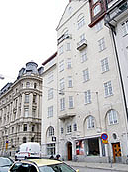| | |
| Company type | Private |
|---|---|
| Industry | Internet, Search Engine systems, computer software |
| Founded | Stockholm, Sweden (2007) |
| Headquarters | Stockholm , Sweden |
Key people | Jan-Olof Granlund, Johan Berg, Thor-Daniel Hjaltason, Asgeir Bjarnason, Claes-Göran Fridh, Kevin Hoffman |
| Products | (See article) |
| Website | www.munax.com (Offline) |
Munax was a Swedish company that developed a Large Hyper-Parallel Execution (LHPE) search engine system Munax XE. Munax XE is an all-content search engine and powered nationwide and worldwide public search engines with page, document, audio, video, images, software, and email search. Other customers included vertical search engines and mobile operators.
Contents
- History
- Munax features
- PlayAudioVideo
- Mobile and metasearch
- Businesses
- Name and logo
- References
- External links
For multimedia, Munax also developed a functionality that lets the visitors pre-listen to audio and preview videos, making it easier for the visitor to decide what song or video he/she is looking for before playing it, or visiting the site hosting it. The visitor could also decide to transcode any multimedia file to make it moveable to the mobile phone or any type of multimedia player.






